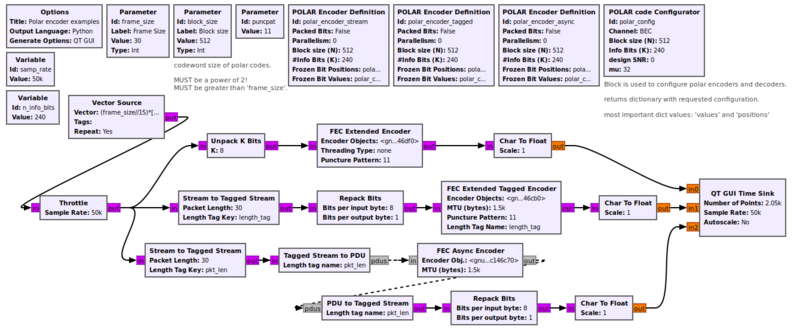Tagged Stream to PDU: Difference between revisions
Jump to navigation
Jump to search
(add note for 3.10) |
|||
| Line 3: | Line 3: | ||
The sent message is a PMT-pair (created by pmt::cons()). The first element is a dictionary containing all the tags. The second is a vector containing the actual data. | The sent message is a PMT-pair (created by pmt::cons()). The first element is a dictionary containing all the tags. The second is a vector containing the actual data. | ||
<b>Note for 3.10</b> This block has been moved from gr-blocks to gr-pdu, which causes a name change of the id. See [[Porting_Existing_Flowgraphs_to_a_Newer_Version#PDU_blocks_moved_from_gr-blocks_to_gr-pdu]] for details. | |||
== Parameters == | == Parameters == | ||
Latest revision as of 14:42, 27 January 2022
Turns received stream data and tags into PDUs and sends them through a message port.
The sent message is a PMT-pair (created by pmt::cons()). The first element is a dictionary containing all the tags. The second is a vector containing the actual data.
Note for 3.10 This block has been moved from gr-blocks to gr-pdu, which causes a name change of the id. See Porting_Existing_Flowgraphs_to_a_Newer_Version#PDU_blocks_moved_from_gr-blocks_to_gr-pdu for details.
Parameters
- Length tag name
- The name of the tag that specifies how long the packet is.
Example Flowgraph
This flowgraph can be found at [1]
Source Files
- C++ files
- TODO
- Header files
- TODO
- Public header files
- TODO
- Block definition
- TODO
